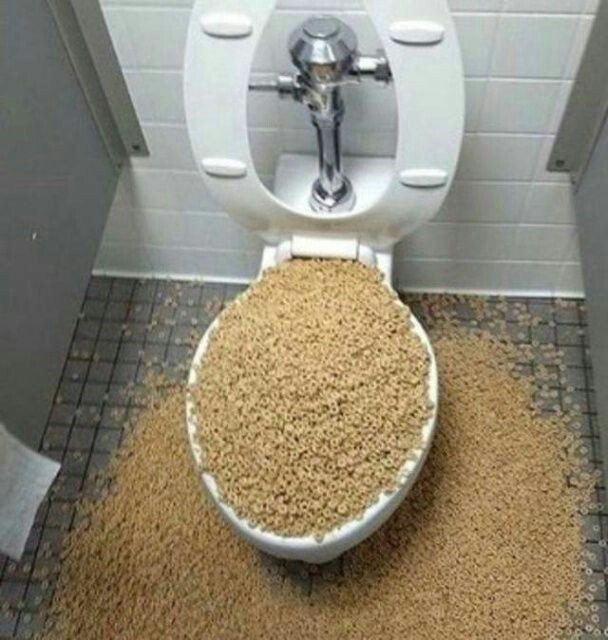We have discovered the article about What Can Happen If You Flush Food Down the Toilet? below on the internet and reckoned it made good sense to share it with you here.

Introduction
Many individuals are often faced with the issue of what to do with food waste, especially when it comes to leftovers or scraps. One common inquiry that emerges is whether it's all right to purge food down the commode. In this post, we'll explore the reasons people could consider flushing food, the effects of doing so, and alternative approaches for proper disposal.
Reasons that people could think about flushing food
Absence of understanding
Some people might not recognize the potential damage triggered by purging food down the toilet. They might incorrectly believe that it's a safe technique.
Comfort
Flushing food down the toilet may appear like a quick and very easy service to disposing of undesirable scraps, especially when there's no nearby trash can readily available.
Idleness
Sometimes, individuals might merely pick to flush food out of sheer idleness, without taking into consideration the repercussions of their activities.
Effects of flushing food down the commode
Ecological impact
Food waste that ends up in rivers can contribute to pollution and damage marine ecological communities. Furthermore, the water utilized to purge food can stress water resources.
Pipes issues
Purging food can cause blocked pipes and drains, causing costly plumbing repair work and troubles.
Types of food that should not be purged
Coarse foods
Foods with coarse structures such as celery or corn husks can get entangled in pipes and trigger obstructions.
Starchy foods
Starchy foods like pasta and rice can take in water and swell, causing blockages in pipelines.
Oils and fats
Greasy foods like bacon or food preparation oils need to never ever be purged down the commode as they can solidify and trigger blockages.
Correct disposal methods for food waste
Using a waste disposal unit
For homes geared up with waste disposal unit, food scraps can be ground up and flushed with the pipes system. Nonetheless, not all foods appropriate for disposal in this manner.
Recycling
Certain food packaging products can be reused, reducing waste and minimizing environmental impact.
Composting
Composting is a green method to deal with food waste. Organic materials can be composted and used to improve dirt for gardening.
The importance of correct waste administration
Decreasing ecological damage
Correct waste administration techniques, such as composting and recycling, assistance minimize contamination and maintain natural resources for future generations.
Shielding pipes systems
By preventing the practice of flushing food down the commode, property owners can protect against pricey pipes repair work and keep the stability of their plumbing systems.
Conclusion
Finally, while it might be tempting to flush food down the commode for ease, it is essential to understand the possible repercussions of this activity. By embracing appropriate waste monitoring methods and getting rid of food waste sensibly, people can add to healthier plumbing systems and a cleaner atmosphere for all.
FLUSH FOOD DOWN THE TOILET?
FLUSHING FOOD CAN CAUSE BLOCKED DRAINS IN YOUR HOME
All of the plumbing fixtures in your home are connected to the same sewer pipe outside of your home. This outdoor sewer pipe is responsible for transporting all the wastewater from your home to the Council sewer mains. Even small pieces of food that go down the kitchen sink can cause problems for your sewer. It should therefore be obvious that flushing larger bits of food, such as meat, risks a clog in either the toilet itself or the sewer pipes. Flushing greasy food is even more problematic because oil coagulates when it cools, coating the interior lining of your pipes.
THE TOILET IS NOT A BIN
Food isn’t the only thing that people shouldn’t be flushing down the toilet. People use the toilet to dispose of all kinds of things such as tampons, makeup wipes, dental floss, kitty litter and even underwear. Water goes to great lengths to educate residents about the high costs and stress placed on wastewater treatment systems simply from people flushing the wrong stuff down the toilet. It costs taxpayers millions of dollars each year, and homeowners thousands in blocked drain repairs.
FLUSHING FOOD IS A WASTE OF WATER
Flushing food is a waste of our most precious resource - water. In June this year Level 1 water restrictions were introduced to protect water supply from drought conditions. Much of New South Wales continues to be affected by prolonged drought with recent figures revealing up to 97 per cent of the state remains in drought. Depending on whether you have a single or dual flush toilet, every single flush uses between five and 11 litres of water. In the current climate this is a huge amount of water to be wasting on flushing food that should be placed in the bin (or better yet, the compost).
https://www.jabplumbingsolutions.com.au/blog/can-you-flush-food-down-the-toilet

I recently found that page on Think Twice Before Flushing Food Down Your Toilet while doing a search on the internet. Please take the opportunity to promote this entry if you liked it. I am grateful for your time. Come back soon.
Book Your Service